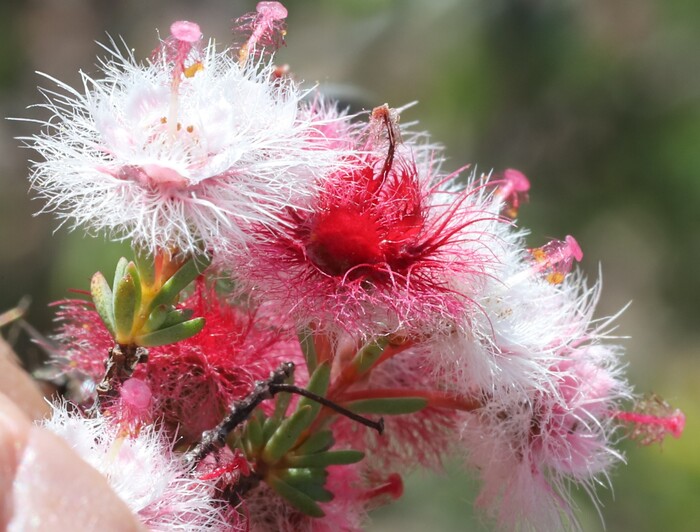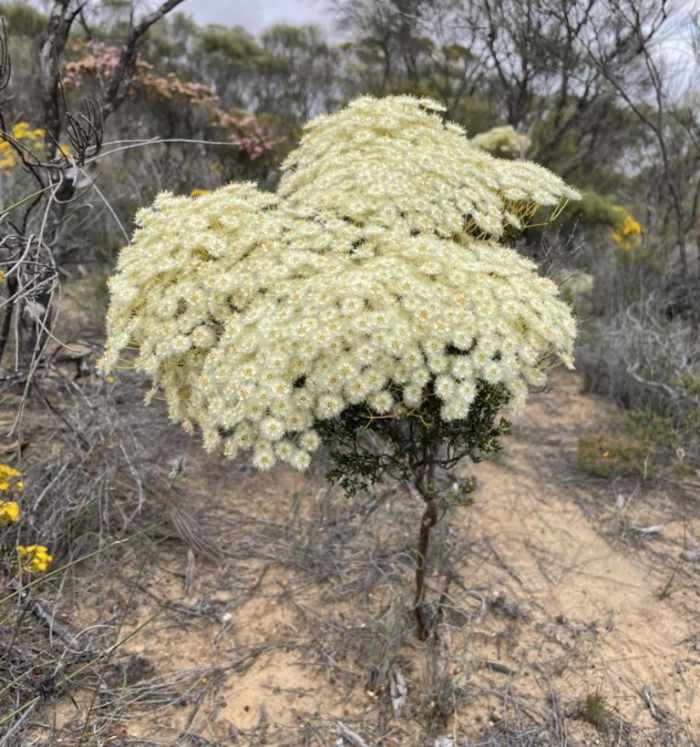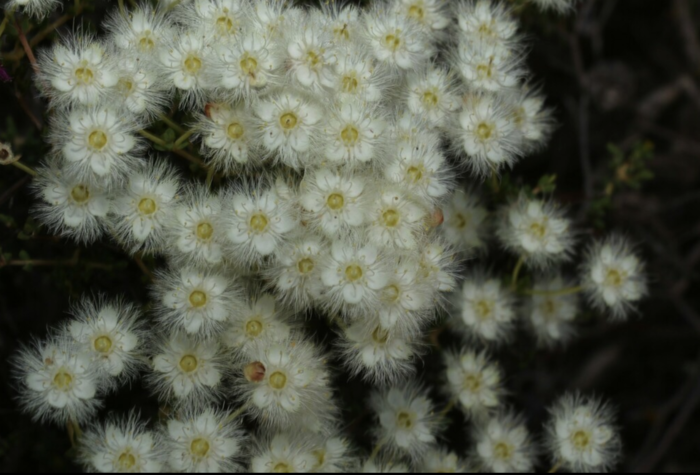Verticordia roei, commonly known as Roe's Featherflower, is a remarkable species of shrub in the Myrtaceae family, endemic to the south-west of Western Australia. With its delicate, creamy-white flowers and its relatively rare presence in the wild, it is a plant of both ecological and aesthetic importance. Let's explore this intriguing species, delving into its characteristics, habitat, and conservation status.
Kingdom: Plantae
Clade: Tracheophytes
Clade: Angiosperms
Clade: Eudicots
Order: Myrtales
Family: Myrtaceae
Genus: Verticordia
Species: Verticordia roei
Verticordia roei subsp. roei
Verticordia roei subsp. meiogona
This classification places Verticordia roei within the Myrtaceae family, a diverse group known for aromatic plants such as Eucalyptus and Melaleuca. Within the Verticordia genus, it belongs to the subgenus Verticordia, section Catocalypta, along with related species like V. inclusa and V. insignis.

Verticordia roei is a shrub that typically reaches a height of up to 1 meter (3 feet), with a single main stem arising from its base. The plant is characterized by narrow, linear to elliptic-shaped leaves, which are 1.5–4 mm long and have a triangular cross-section, finishing in a rounded tip.
Leaves: The leaves are narrow, ranging from linear to elliptical in shape, and 1.5–4 mm long. Their structure helps the plant conserve water, an essential adaptation in the often dry climate of its native habitat.
Flowers: The flowers of Verticordia roei are arranged in corymb-like clusters, with a distinctive creamy-white to pinkish hue. These flowers are fragrant and bloom between October and November, attracting pollinators such as bees. Each flower is supported by an erect stalk about 12–20 mm (0.5–0.8 in) long. The floral cup is broadly hemispherical, about 1.5 mm long, and covered with short hairs. The sepals measure 6–7 mm long, with 5 to 7 long, feathery lobes. The petals are slightly smaller than the sepals, measuring about 4–5 mm and are typically dish-shaped with small teeth around their edges. The style is short, about 1–3 mm long, and covered with fine hairs.
The plant's scented flowers are designed to attract pollinators, especially insects, which play a crucial role in its reproduction. The blooming period in spring to early summer ensures the plant aligns its reproductive cycle with favorable environmental conditions.
Verticordia roei was formally described by Stephan Endlicher in 1838, with its description appearing in the publication Stirpium Australasicarum Herbarii Hugeliani Decades Tres. The species was named in honor of John Septimus Roe, the first Surveyor-General of Western Australia, who collected the type specimen.

In 1991, Alex George conducted a review of the genus Verticordia and identified two distinct subspecies of V. roei:
Verticordia roei subsp. roei: This subspecies is more common and widespread, with stamens ranging from 3–4 mm long and styles measuring 2–3 mm long.
Verticordia roei subsp. meiogona: This subspecies has smaller stamens (1.5–2.5 mm) and shorter styles (1.5–2.0 mm). It has a limited distribution, found only in a few specific regions of Western Australia, primarily near Dalwallinu and Mukinbudin.
Verticordia roei belongs to the subgenus Verticordia, within the section Catocalypta. Other species in this section include V. inclusa, V. apecta, V. insignis, V. habrantha, V. lehmannii, and V. pritzelii.
Verticordia roei is found primarily in the south-west of Western Australia, where it thrives in sandy soils, often enriched with clay or loam over laterite. This species is adapted to the region's specific soil and climate conditions, which include a Mediterranean-style climate with dry summers and mild, wet winters.
Distribution: The subspecies roei is found over a wide range between Merredin, Boorabbin, Wickepin, Hyden, and Lake Grace, which lies within the Avon Wheatbelt and Esperance Plains biogeographic regions. In contrast, the subspecies meiogona has a much smaller distribution, confined to areas near Dalwallinu and Mukinbudin in the Avon Wheatbelt and Coolgardie bioregions.
Verticordia roei typically grows in open woodlands, heathlands, and grasslands where the soil is well-drained and where it can receive ample sunlight. These habitats provide the plant with the necessary conditions for growth during the flowering season.
Verticordia roei subsp. meiogona is classified as Priority One by the Western Australian government, meaning it is known from only one or a few locations, all of which are considered at risk due to their isolation and potential threats. This subspecies is vulnerable to habitat destruction, and conservation efforts are necessary to protect these fragile populations.
The more widespread subspecies roei, however, is not currently threatened and is found in several protected areas. While it faces some habitat loss due to agricultural expansion and urbanization, the species' larger distribution and adaptability have helped it remain stable in the wild.

Verticordia roei has proven to be a challenging plant to propagate in cultivation. Despite the plant's beauty, it is difficult to maintain in non-native environments, and many attempts at propagation have been unsuccessful. However, subspecies meiogona has shown more promise, with successes reported through cuttings and grafting onto Chamelaucium uncinatum rootstock. Horticulturists have made strides in developing techniques to grow Roe's Featherflower in gardens, but the plant remains a difficult species to cultivate.
Verticordia roei is a stunning and unique shrub, native to the south-west of Western Australia. Its feathery white flowers, narrow leaves, and distinctive habitat make it a fascinating species for botanists and nature enthusiasts alike. With its limited distribution, particularly for the subspecies meiogona, it serves as an example of the importance of conservation and the delicate balance required to preserve endemic species. While its horticultural use remains challenging, continued efforts to propagate and protect this species offer hope for its future, both in the wild and in cultivation.
animal tags: Myrtaceae
We created this article in conjunction with AI technology, then made sure it was fact-checked and edited by a Animals Top editor.